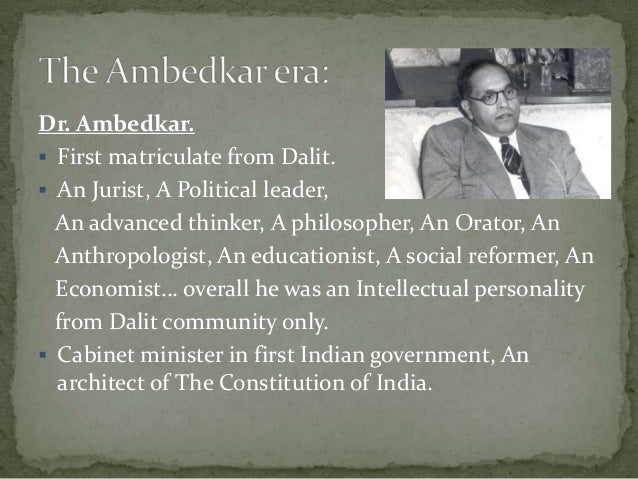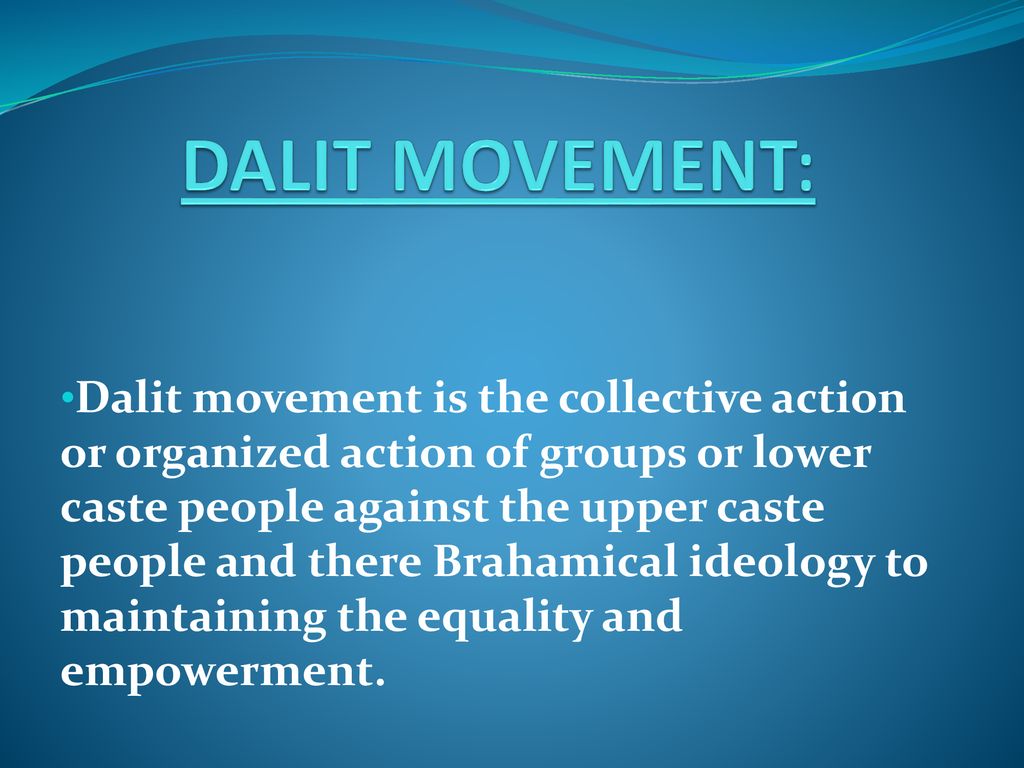Ambedkar and Dalit Movements
Relevance: Sociology: Social Movements in Modern India: Backward classes & Dalit movement.
-
G.S paper I: Modern Indian history from about the middle of the eighteenth century until the present- significant events, personalities, issues.
After getting his degree in law in the U.S. Ambedkar returned to India. At the first depressed class conference in Nagpur in 1920, which he attended in the company of Shahu Maharaj, he attacked not only nationalist spokesmen, but also Vitthal Ramji Shinde, the most prominent non-Dalit social reformer.
By the time Simon Commission arrived in India, Ambedkar had clearly emerged as the most articulate Dalit leader in the country with a significant mass base.
Ambedkar was of the view that at caste level, Brahmanism was the main enemy, just as capitalism and landlordism were the main enemies in class term. He emphasized the need for economic as well as social measures for the liberation of the Dalits (Omvedt 2006).
Ambedkar wrote extensively to construct the Dalit perspective of nationalism and build an anti-Hindu and anti-Gandhian perspective for liberation of the Dalit. He had a different approach and philosophy regarding the emancipation of Dalits.

He believed that the egalitarian social order for which he is striving is not possible within Hinduism whose very foundation is hierarchical with SCs at the bottom. The Chaturvarna system, which Gandhi did not oppose, was part of Hinduism.
The religious sanctity behind caste and Varna must be destroyed and it is possible to do so by discarding the divine authority of the Shastras. Obviously, Ambedkar did not have faith in the charitable spirit of the caste Hindus towards the untouchables. He asserted that SCs should get organised, educate and struggle for self-respect rather than depend on sympathy. Along with ‘annihilation of caste’, he also raised the demand for separate electorate for the dalits.
Thorat and Deshpande (2001) have argued that Ambedkar’s views on the caste system and untouchability have evolved through interaction both with mainstream neo-classical economic theory and the Marxian approach. But unlike the Marxists, he also stressed on the role of Hindu religious philosophy in mutually reinforcing economic forces and institution.

For Ambedkar, both Brahmanism and capitalism are the twin enemies of Dalits (Shah 2001). By ‘Brahmanism’ he meant negation of the spirit of Liberty, Equality and Fraternity. In this sense, it is rampant in all classes though the Brahmins have been originators of this. In his early writing, Ambedkar insisted that ‘caste’ can be added to a class approach.
But after some disillusionment with communism, he moved away from this analysis at the end of his life. As he moved close to Buddhism, he developed the alternative of what may be called “Buddhist economics” as against the Marxist socialism. He then argued that equality will be of no value without fraternity and liberty.
The Mahars of Maharashtra under the leadership of Ambedkar also initiated the Buddhist conversion movement in the mid-1950s. But since early 1930s, Ambedkar was very clear that to improve their status, dalits have to renounce Hindu religion.
- Ambedkar believed that there was no salvation for the untouchables so long as they remained in the Hindu fold. And it was his conviction that religion was the source of power.
- While embracing Buddhism in 1956, he argued that “religion is necessary for people in distress”.
- He preferred Buddhism over other religion not only because it is indigenous and preaches equality but also because ‘there is place of God and soul in the Buddhist religion’ The efforts made by Ambedkar not only elevated the subjugated position of Dalits but also mobilized them to make efforts for their rights.
- Mukhopadhyay has classified Ambedkar’s leadership into three phases; the first phase is from 1924 to 1930. During this period, he mainly organized many campaigns like Kala Ram and Mahad Satyagraha.
- Through these efforts, he tried to provide the basic rights of using public places and facilities to Dalits of which they were deprived.
- In 1927 at Mahad he headed thousands of lower caste people to protest against the decision of upper castes to debar Dalits from drawing water from public wells.
He used the water of that tank along with other untouchables. In a similar effort in 1929, he began a temple entry campaign.
Though these efforts were not very successful, nevertheless they attracted the attention of people at global level about the atrocities on Dalits in India.
- In the second phase which started in 1930, the main focus was on attaining political power in order to improve the socioeconomic position.
- The third and the final phase was in a way against Hinduism as during this period he adopted Buddhism.
The theoretical footings of the Dalit intellectual movement can be traced in subaltern perspective. As a spokesperson of this perspective, Ambedkar urged Indians to analyze Indian society from the Dalit standpoint.
Therefore, the Dalit writers seek ‘Ambedkarism’ as a guiding ideology based on equality, liberty, fraternity and social justice to change the existing unequal society.
Away from the narration of their exploitation, exclusion and perpetuation of so-called upper caste hegemony, the Dalit writers have attempted to de-construct the negative and stigmatized image of Dalit society.
As a result they have written extensively on the contributions made by the Dalit saints, poets and social reformers. The emergence of Dalit intellectuals has helped the Dalits to express their grievances and exploitation along with highlighting the achievements of Dalit scholars at local as well as global level

